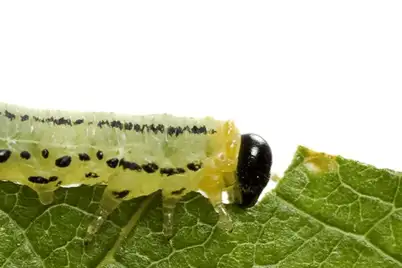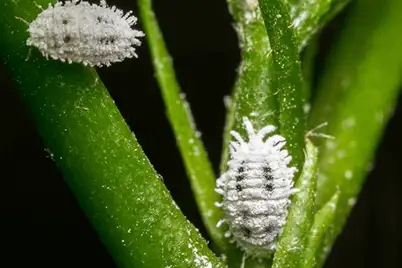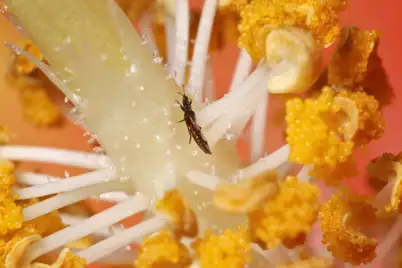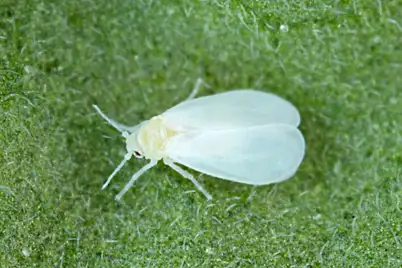Eggs
After mating, the adult female moth lays eggs in a cluster of 150-200, covering them in a mass of grey-hairs (setae). Eggs are generally laid in dense vegetation at the tip of a leaf but may also be found on hard surfaces and structures near a food source. Females generally lay 1800-2000 eggs over a period of five to six days, later dying after reproducing. Eggs are round-to-oval shaped and 0.5 mm in diameter. Eggs are initially a creamish-tan colour, darkening with age. After incubating for two to five days, eggs hatch into larvae (caterpillars).
Larvae
The caterpillar larvae are the damaging stage of the Lawn Armyworm lifecycle. Larvae develop through five to six stages (instars) where caterpillars grow then shed their exoskeleton - a process known as moulting.
The body is smooth, soft, tubular and heavily segmented. At the front of the body is a rounded head capsule with a distinct inverted 'Y' marking on the forehead. On the underside of the head are chewing mouthparts and inconspicuous antennae. Attached to the underside and front section of the body (thorax) are three pairs of short and pointy legs - these are the 'true legs'. Further along the body are four pairs of abdominal 'pro legs' and at the last body segment is one pair of 'anal prolegs'.
The first instar is 1 mm long, the body is white with a black head capsule. Instars gradually develop into a green colour with yellowish-white stripes extending longitudinally from the neck to the tip of the abdomen.
The final instar is up to 40 mm long with a greyish-brown body and dark brown head capsule. On the upper and lower sides of the body are green, grey and beige longitudinal stripes. On the upper side of the body, along either side of the back, are two distinct rows of paired, black, semi-circle markings, occurring at each segment.
When disturbed, caterpillars drop to the ground, tuck their head into their abdomen and form into a spiral-like shape.
Caterpillars can spin silk which is produced from salivary glands in the mouth. Silk is used for attachment to plants; travelling to new areas of vegetation by silken threads being caught by the wind; and spinning cocoons for pupating.
Mostly seen in the evening and at night - especially mature instars – they hide during the day underneath clods of soil, beneath vegetation or in lawn thatch. However, on overcast days or when in large numbers, they may also be seen during the day.
Pupae
After 17-32 days, mature larvae burrow into the soil and dig a chamber to create an 'earthen cell'. The larva forms a cocoon made from soil, vegetation and webbing. As pupae mature they become glossy, smooth, hard, a dark reddish-brown and approximately 16mm long.
Adults
After pupating for seven to ten days, adult moths emerge, mate one to two days later and survive for one to two weeks.
The body is dull light-brown, long, stout and approximately 20 mm long. The abdomen is segmented and narrower towards the end.
The head and body are covered in hair-like scales (setae). On either side of the head are a pair of large, rounded, blackish-brown compound eyes. Above the eyes are a pair of long, thin and light-brown antennae - primarily used for sensing smell. On the underside of the head is a long and thin feeding tube (proboscis) which remains in the curled position at rest and extends when feeding on the nectar of flowers.
Attached to the underside and front section of the body (thorax) are three pairs of long and slender legs. Legs are mostly dark brown with white joints. The upper leg of the male foreleg is densely covered in tufts of light-brown hair-like scales.
Attached to the upper-side of the thorax are two pairs of membranous scaly wings with a wingspan up to 40 mm wide. Forewings are mostly brown with a light brown, beige and dark brown mottled pattern. Hind wings are shiny, plain and off-white with dark veins. At rest, wings fold down along the length of the body, forming an inverted 'V' shape. Adult moths can fly and travel long distances, usually in September and October.








